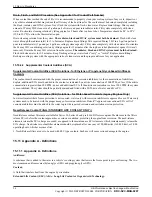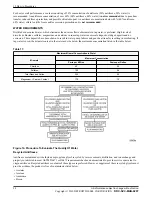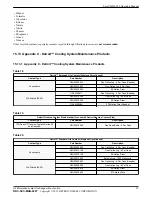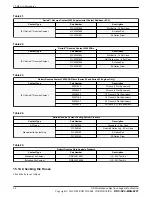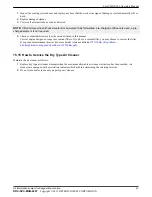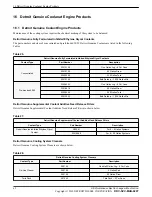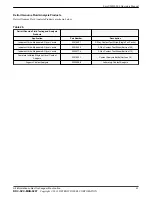
•
Methoxy propanol-based antifreeze
must not be used in Detroit™ engines because it is not compatible with fluorocarbon
elastomer seals found in the cooling system.
•
Glycol-based coolants formulated for Heating/Ventilation/Air Conditioning (HVAC)
must not be used in Detroit™
engines. These coolants generally contain high levels of phosphates, which will form deposits on hot internal engine
surfaces, reduce heat transfer, and cause water pump seal leaks.
•
Waterless-type coolants
must not be used.
•
Nitrite Organic Acid Technology (NOAT)
must
not
be used in Detroit™ engines because with poor maintenance
components become more vulnerable.
15.9.3
Non-Formulated Additives NOT Permitted
The following additives should not be used in Detroit™ engines:
•
Soluble Oils:
Soluble oil additives are not approved for use in Detroit™ engine cooling systems. A small amount of oil
adversely affects heat transfer. For example, a 1.25% concentration of soluble oil increases the fire deck temperature 6%.
A 2.50% concentration increases the fire deck temperature 15%. The use of soluble oil additives may result in engine
overheating and/or failure.
•
Chromates:
Chromate additives are not approved for use in Detroit™ engine cooling systems. Chromate additives can
form chromium hydroxide, commonly called “green slime.” This, in turn, can result in engine damage due to poor heat
transfer. Cooling systems operated with a chromate-inhibited coolant must be chemically cleaned with Detroit™ Genuine
Coolant
Twin Pack
cooling system cleaner/conditioner (or equivalent sulfamic acid/sodium carbonate cleaner) and
flushed.
•
Phosphate Inhibitors:
Phosphate has tendency to form deposits on surfaces transferring high heat which ultimately affect
cooling capabilities. Phosphate deposits on water pump seals will result in coolant leakage across seal faces.
15.10 Maintenance
15.10.1 Topping Off Coolant
The coolant level should be checked daily and at each service interval. If topping off is necessary, add coolant which is
identical to the initial–fill coolant. ELCs should be topped-off with a coolant of the same formulation; SLCs should also be
topped-off with a coolant of the same formulation.
15.10.2 Coolant Maintenance Intervals
The following tables contain the coolant maintenance intervals.
15.10.3 Extended Life Coolant Additive Maintenance Procedures
The concentration of ELC corrosion inhibitors will gradually deplete, at a much slower rate than SLC corrosion inhibitors,
during normal engine operation. Corrosion inhibitor limits are established by the coolant manufacturer. Therefore Detroit™
recommends following the manufacturer’s recommendations as to minimum and maximum limits.
Freeze Point Check
To best measure the quality of anti-freeze coolant, a check of the freeze point (glycol concentration), by refractometer, should
be performed at each service interval to ensure anti-freeze levels are within specification. Detroit™ requires a freeze point of
-34°F (+/-10°F) to guarantee optimal engine protection. The exception would be certain regions that require a freeze point of
-60°F to protect against colder climates.
15 How to Procedures
54
All information subject to change without notice.
Copyright © 2019 DETROIT DIESEL CORPORATION
DDC-SVC-MAN-0207

















